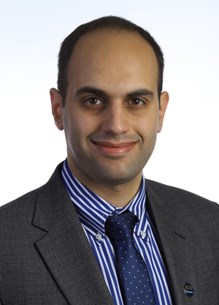Meeting
2015 ASCO Annual Meeting

Indiana University School of Medicine, Indianapolis, IN
Mohammad Issam Abu Zaid , Howard D. Sesso , Chunkit Fung , Darren Richard Feldman , Robert James Hamilton , David J. Vaughn , Clair Beard , Malcolm J. Moore , Deepak M. Sahasrabudhe , Eileen Johnson , Sophie Fossa , Lawrence H. Einhorn , Lois B. Travis
Background: Platinating agents are among the most commonly used group of cytotoxic drugs worldwide. Few studies, however, have comprehensively examined the number and range of co-morbidities following CHEM in uniformly treated patients. Given the limited number of CHEM regimens used to cure TC and high long-term survival rates, TCS represent a unique population to provide new knowledge. We examined CHCs in an ongoing North American multi-center study of TCS given CHEM (NCI 1R01 CA157823-02). Methods: Eligible TCS were aged < 50 y at diagnosis and treated with only first line cisplatin CHEM after 1990. Questionnaires regarding co-morbidities and prescription drugs were completed. Evaluated CHCs included tinnitus, hearing loss, peripheral neuropathy (PN), balance/vertigo, renal disease, hypertension (HTN), Raynaud’s syndrome, diabetes (DM), thyroid disease, hypogonadism, erectile dysfunction (ED), anxiety/depression, pain, and others. For PN, responses of “a little”, “quite a bit”, or “very much” regarding tingling, numbness or shooting/burning pain were scored as ‘yes’. Yes/no variables assessed ototoxicity (i.e., tinnitus, “problems hearing words, sounds, or language in crowds”, hearing aid use, and deafness). Results: We evaluated 680 consecutively enrolled TCS. Median age at diagnosis was 31 (range, 15-49 y); median time since CHEM completion was 52 mos. (range, 1-30 y). Only 15% of patients reported no CHCs, with 21%, 23%, 17%, and 24% reporting 1, 2, 3, or 4+ CHCs, respectively. 47% reported any ototoxicity including tinnitus in 36% of all TCS. Ten patients reported hearing aid use. 55% reported PN, while 29% had both PN and ototoxicity. Medication use for HTN, hypercholesterolemia, DM, ED, pain, or anxiety/depression was reported by 8%, 11%, 4%, 4%, 7%, and 13% of patients respectively. Conclusions: Several years after CHEM, nearly a quarter of TCS in this study reported 4 or more CHCs. We may have overestimated the number of CHCs, since PN included “a little” symptomatology, and ototoxicity was based on limited binary variables without finer gradation of symptoms. Future studies will continue to identify important CHCs following CHEM in TCS.
Disclaimer
This material on this page is ©2024 American Society of Clinical Oncology, all rights reserved. Licensing available upon request. For more information, please contact licensing@asco.org
2015 ASCO Annual Meeting
Poster Discussion Session
Patient and Survivor Care
Patient and Survivor Care
Survivorship
J Clin Oncol 33, 2015 (suppl; abstr 9519)
10.1200/jco.2015.33.15_suppl.9519
9519
178
Abstract Disclosures
2024 ASCO Annual Meeting
First Author: Benedict J. Panizza
2023 ASCO Annual Meeting
First Author: Danny Rischin
2022 ASCO Annual Meeting
First Author: Paul C. Dinh Jr.
2021 Genitourinary Cancers Symposium
First Author: Davide Bimbatti